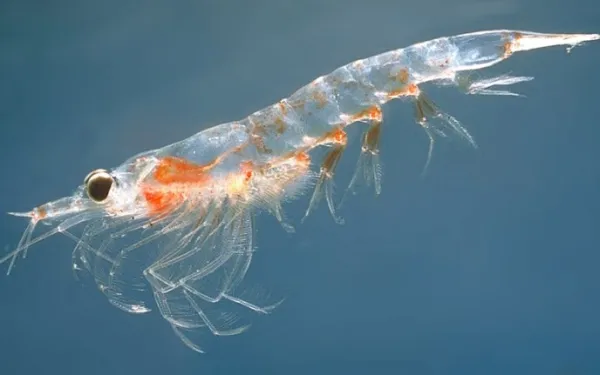Many of the environmental changes caused by current climate change, such as rising temperatures, directly affect changes in marine and ocean currents, as well as the drying out of lentic aquatic systems during droughts, with the resulting death of aquatic biodiversity, including zooplankton. In the face of these ecological changes, the study of planktonic communities plays a very important role. By understanding the biotic and abiotic factors involved in regulating the dynamics and structure of aquatic ecosystems, we can facilitate their protection and conservation.
Continue reading this article to immerse yourself in the amazing aquatic world and discover what zooplankton is, its importance, and many examples of the organisms that comprise it.

Zooplankton, or animal plankton, is the term given to all living organisms belonging to the Animal Kingdom that float erratically within the first 200 meters of depth in many of the planet's aquatic ecosystems.
These animals that make up zooplankton are usually mainly microscopic in size and, together with phytoplankton or plant plankton, fill the fresh and salt waters of aquatic ecosystems with suspended life. Let's look at the following list for more characteristics of zooplankton:
The organisms that make up zooplankton are heterotrophs, feeding on primary producers such as phytoplankton, as well as other animal components of zooplankton, and other suspended microorganisms, such as decomposing bacteria and organic waste.
They have high growth rates and short life spans.
Zooplankton is considered one of the essential components of the biological communities of aquatic systems, occupying the position of primary consumer in food chains and being the link that connects autotrophic producer organisms (phytoplankton) with secondary consumers (fish, marine mammals, some birds, and all types of invertebrates).
Zooplankton is present in both open-ocean aquatic ecosystems (seas and oceans of the world) and lentic freshwater ecosystems (lakes, lagoons, etc.).
As previously mentioned, the animals that comprise zooplankton are primarily microscopic organisms, so many of them may be largely unknown if we are unfamiliar with the taxonomic groups of invertebrate animals. Krill (Meganyctiphanes norvegica) is probably the best-known zooplankton animal, but what about the other animals that comprise it? In the following list of zooplankton examples, you can learn the names of many of them:
Cladocerans.
Rotifers.
Ctenophores.
Siphonophores.
Pelagic polychaetes.
Ostracods.
Echinoderm larvae.
Small crustaceans, such as decapods, and their characteristic nauplius-like larvae.
Eggs, larvae, and juveniles of some fish species.
As a component of the food chains of aquatic ecosystems, the presence of zooplankton is essential for the proper functioning and optimal balance of these ecosystems. Based on the specific composition and vital characteristics of this zooplankton, it is possible to determine the state of well-being or, conversely, the deficiencies of aquatic biological communities and systems. Therefore, we can affirm that zooplankton is an optimal indicator of the quality of aquatic ecosystems.
Furthermore, zooplankton plays a very important role in planktonic interactions, that is, in the biological relationships that occur between organisms that comprise the zooplankton-phytoplankton ecosystem, as well as within the zooplankton itself.
Furthermore, the astonishing biodiversity that characterizes the composition of zooplankton is considered one of the most important natural resources in aquatic ecosystems, as they ensure the supply of nutrients and animals from other links in the food chain during major natural phenomena such as El Niño.
As we have seen previously, both zooplankton and phytoplankton are part of planktonic communities that serve as food for numerous animals, thus maintaining the balance of food chains in aquatic ecosystems. However, there are several differences between these two groups of aquatic organisms. These are the main differences between zooplankton and phytoplankton:
As their names indicate, zooplankton is composed of animal species, while phytoplankton is made up of plant species.
They are heterotrophic and autotrophic organisms, respectively.
Zooplankton is distributed at any depth within the first 200 meters of open ocean ecosystems, while phytoplankton is found only in the upper layers, those that receive sunlight.
To further understand these organisms, we recommend reading these other articles on What is phytoplankton and What is plankton and its importance.
animal tags: zooplankton
We created this article in conjunction with AI technology, then made sure it was fact-checked and edited by a Animals Top editor.